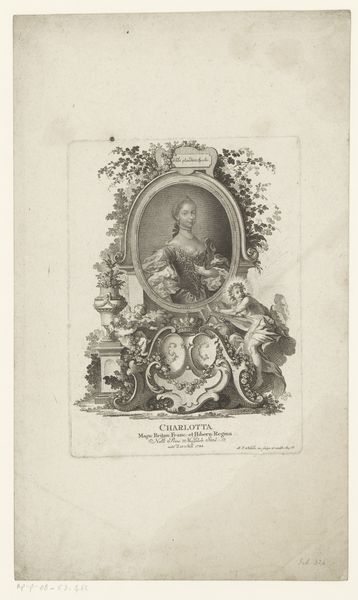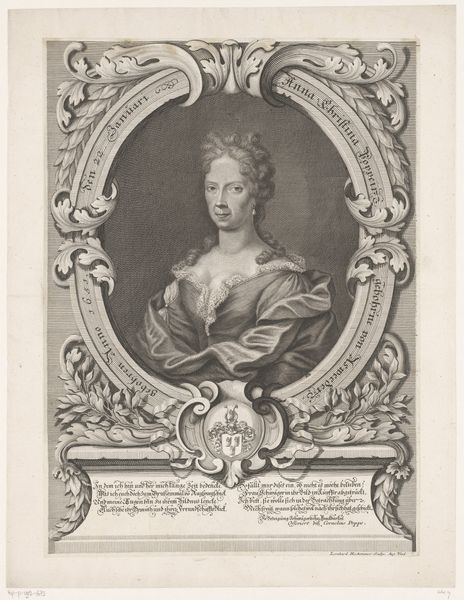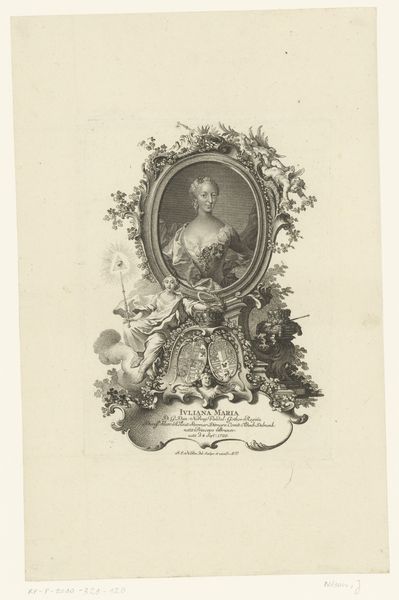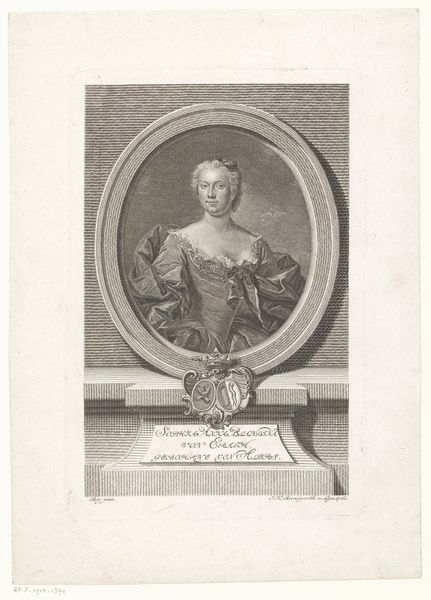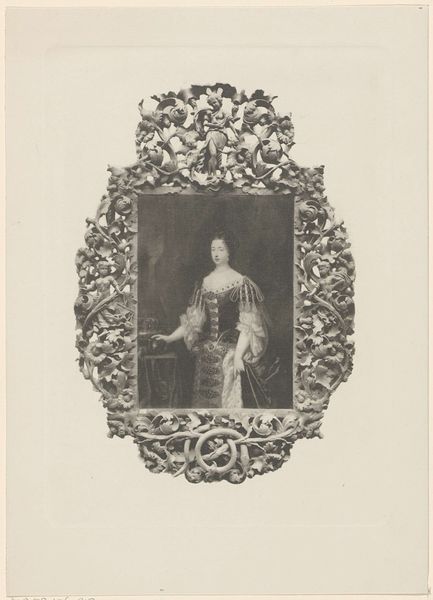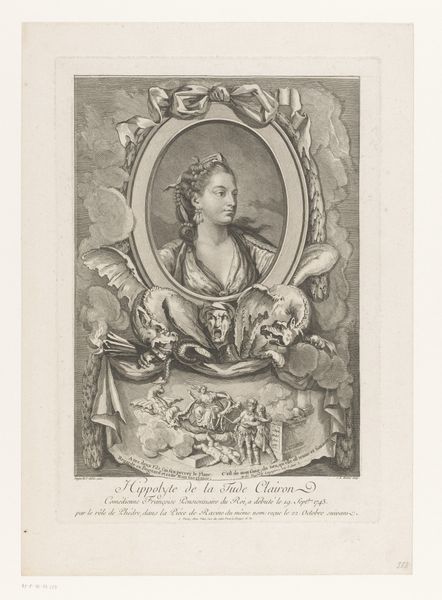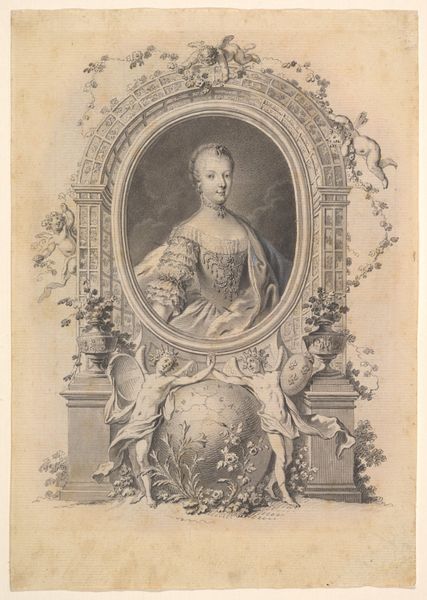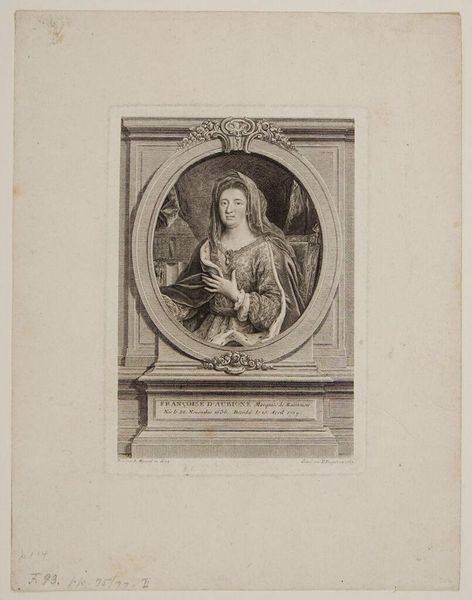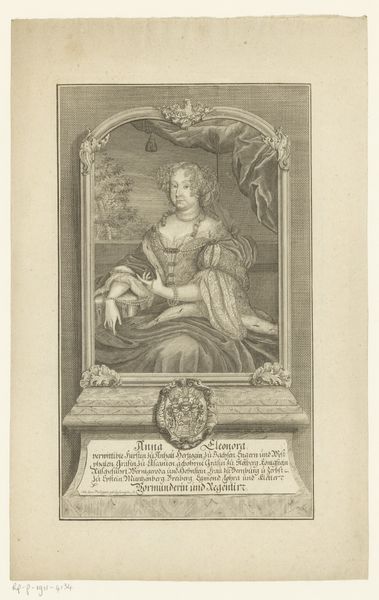
Portret van Sophia Friederike von Hohenlohe-Bartenstein 1731 - 1788
0:00
0:00
johannesaiasnilson
Rijksmuseum
print, engraving
#
portrait
#
baroque
# print
#
engraving
Dimensions: height 227 mm, width 163 mm
Copyright: Rijks Museum: Open Domain
Curator: This engraving, attributed to Johann Esaias Nilson, portrays Sophia Friederike von Hohenlohe-Bartenstein. The dating is interesting, it spans 1731 to 1788, so likely covers her lifespan. Editor: It feels so formal, so posed. The oval frame, the architectural backdrop—it all speaks to a certain societal expectation and distance, doesn’t it? There's an emotional remove despite the detail. Curator: Indeed. The symbols surrounding her frame hint at power and lineage. Note the elaborate coat of arms at the bottom, guarded by putti, and the delicate floral ornamentation—all speaking to her noble status. This portrait acts as a declaration. Editor: And the oval itself… it's almost womb-like, an archetype of containment and defined role within her family’s and society's structure. The sharpness of the engraving emphasizes line and detail. Are there particular symbolic elements that stand out to you? Curator: Certainly. The crown atop the shield, while small, visually anchors the composition and implies sovereignty. It reminds us of the weight of dynastic expectation and political maneuvering inherent in such portraits. It’s designed to convey far more than simple likeness. The medium, too - a print, is inherently repeatable, suggesting a wish to disseminate and propagate an ideal of Sophia Friderike. Editor: So this isn't just a likeness, it’s a calculated dissemination of an image of power, and a representation of the aristocratic system, which relied so much on those projected symbols. Curator: Precisely. And it succeeds masterfully in conveying those expectations. Every detail is considered in the grander socio-political tapestry. Editor: Looking closer, I appreciate Nilson's technique. There is delicacy, which allows her own inherent qualities, not just societal position to come through. Curator: Agreed, a talented hand indeed! There’s a reason this work remains engaging centuries later. Editor: It’s a potent reminder of how portraiture actively participated in constructing identities, echoing power relations within and outside the frame. Curator: Yes. Analyzing visual symbols in art opens doors to psychology, history and more! Editor: Leaving me to think about what we now leave behind to represent ourselves. Intriguing!
Comments
No comments
Be the first to comment and join the conversation on the ultimate creative platform.
